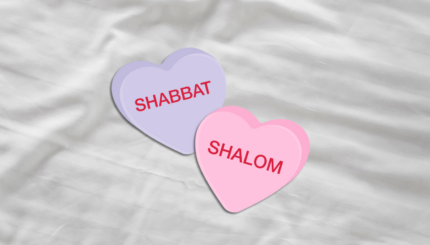Last weekend a group of 60+ LGBTQ and ally teens joined together for the 4th annual Keshet/Hazon LGBTQ & Ally Teen Shabbaton. These words of Torah were shared by one of the participants during Shabbat services.
My name is Rachel Barkowitz, I’m a second year CIT, a one-year-long, out (and proud) lesbian, and I see the dress and white and gold.
For those of you who are unaware of what I am talking about, or are so wrapped up in the amazingness of this glorious weekend that you have already forgotten the occurrences of Thursday, let me remind you:
After taking a picture of a dress at her friend’s wedding, twenty-one year old Caitlin McNeill turned to the internet with a cry for help. She urged her followers to lend a hand in attempting to make sense of the confusing shot she took.
For some, the dress in her picture appears to be white and gold, though other see the dress with the coloring in which it was made, blue and black.
This debate which swept the internet split the global population into two sides, and I had the opportunity of witnessing this first hand when my college roommate refused to believe that I was telling the truth that I saw the dress as white and gold (I almost ended up in tears, but that’s another story).
So why did this dress become so important to world?
I can tell you with absolutely confidence that I…have no idea.
I can say, however, that the garments discussed in
Tetzaveh
, the parashah of this weekend, are of a different kind of importance than the now infamous bluewhitegoldblack dress of the present.
In this portion, God details for Moses how to make extremely significant vestments for Aaron that he must wear when acting as High Priest. To say that the details relayed by God are extensive would be an understatement, but every instruction is necessary to ensure that Aaron is truly sanctified.
And for the record, these garments were commanded to be made of gold and blue.
Coincidence?
I think not.
The attire which is made for Aaron is created so that he may become closer to God, and transform into a more holy version of himself when adorning them. One might venture to say that these garments are Aaron’s way of becoming his purest self.
The way that I became the purest version of myself, however, was by admitting to the world that I liked girls, and ridding myself of the garments I adorned which hid who I truly was.
For a long time, I was scared that coming out would make me less important, less worthy, and pull me further away from God, but I was lying to the world, and, more importantly, lying to myself.
I have learned throughout my journey, though, that being your true self, your purest self, only makes your connection to the world stronger, because it means that you yourself have taken steps toward becoming stronger.
So whether you see the dress as blue and black, or, like I do, white and gold, I urge that when you find yourself fighting for your side, to forget the schisms for a moment, and remember instead what this debate, and this weekend, represent: there is no purer you than a you that is true.
Like this post?
- Join the conversation through MyJewishLearning’s weekly blogs newsletter.
- Get breaking LGBTQ Jewish news, resources and inspiration from Keshet in your inbox!
Shabbat
Pronounced: shuh-BAHT or shah-BAHT, Origin: Hebrew, the Sabbath, from sundown Friday to sundown Saturday.
Torah
Pronunced: TORE-uh, Origin: Hebrew, the Five Books of Moses.


